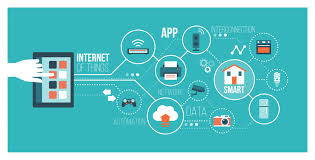
IoT (Internet of Things) Basics
Course Description
The Internet of Things (IoT) refers to a network of interconnected devices that communicate and exchange data over the internet. These devices, equipped with sensors, software, and other technologies, collect and share data in real-time, enabling automation, remote monitoring, and smarter decision-making across various industries.
IoT devices can range from everyday household items like smart thermostats and wearable fitness trackers to industrial equipment used in manufacturing, healthcare, transportation, and agriculture. By leveraging cloud computing, artificial intelligence (AI), and big data analytics, IoT enhances efficiency, reduces costs, and improves user experiences.
A basic IoT system consists of four key components:
- Sensors & Devices – Collect data from the environment (e.g., temperature, motion, or location).
- Connectivity – Transfers data via Wi-Fi, Bluetooth, cellular networks, or other protocols.
- Data Processing – Analyzes the collected data to generate insights or trigger actions.
- User Interface – Allows users to monitor and control IoT devices via apps or dashboards.
Security and privacy challenges remain crucial considerations in IoT deployment, as connected devices are vulnerable to cyber threats. However, with advancements in encryption, authentication, and security protocols, IoT continues to revolutionize industries by making operations smarter and more efficient.
Course Curriculum
Ethan Granger
DeveloperI am a web developer with a vast array of knowledge in many different front end and back end languages, responsive frameworks, databases, and best code practices








